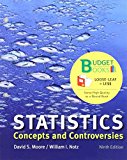
Concept explainers
(a)
To find: The two-way table of time of day versus answered or not and also the percentage of calls answered in each time period.
(a)
Answer to Problem 31RE
Solution: The result obtained is as follows:
| Weekday morning | Weekday evening | Total | |
| Answered | 1313 | 1840 | 3153 |
| Unanswered | 991 | 614 | 1605 |
| Total | 2304 | 2454 | Grand Total = 4758 |
The percentage of calls answered on weekday morning and weekday evening is 57.0% and 75.0%, respectively.
Explanation of Solution
Calculation: Compute the row and column total as follows:
| Weekday morning | Weekday evening | Total | |
| Answered | 1313 | 1840 | 1313+1840 = 3153 |
| Unanswered | 2304-1313 = 991 | 2454-1840 = 614 | 991+614 = 1605 |
| Total | 2304 | 2454 | Grand Total = 4758 |
The number of answered calls on weekday morning is 1313 and on weekday evening is 1840. The number of unanswered calls on weekday morning is 991 and on weekday evening is 614. The total answered calls on weekday morning and weekday evening is 3153 and total unanswered calls on weekday morning and weekday evening is 1605. The grand total is 4758. Now, compute the percentage of answered call in weekday morning as shown below:
Similarly, compute the percentage of answered call in weekday evening as shown below:
Interpretation: Therefore, it can be concluded number of calls answered on weekday morning is less in comparison to the number of calls answered on weekday evening.
(b)
To explain: Why there should be significant relationship between time of day and answering the call.
(b)
Answer to Problem 31RE
Solution: The relationship will be significant because there is a huge difference in the percentage of calls answered in morning and evening.
Explanation of Solution
It can be seen that there is a big difference in the percentage of calls answered. The most of the calls were answered in the weekday evening which infers that the time of the calls matters. Thus, the percent of calls answered in the evening versus morning are very different.
(c)
To test: The chi-square test on the referred data.
(c)
Answer to Problem 31RE
Solution: The result obtained after carrying out chi-square test is as follows:
Yes, it can be said that there is a significant relationship between time of the day and number of calls answered.
Explanation of Solution
Calculation: The two-way table obtained in section 1 of part (a) is as follows:
| Weekday morning | Weekday evening | Total | |
| Answered | 1313 | 1840 | 3153 |
| Unanswered | 991 | 614 | 1605 |
| Total | 2304 | 2454 | Grand Total = 4758 |
The null hypothesis
Now, perform a chi-square test using Minitab as follows:
Step 1: Enter only the number of answered and unanswered call on weekday morning and evening in Minitab.
Step 2: Click on Stat
Step 3: Double click on “Weekday morning” and “Weekday evening” to move it to variable column.
Step 4: Click “OK” to obtain the result.
The result obtained is as follows:
For 5% level of significance, the decision rule states that, if the P-value is less than 0.05, then the null hypothesis is rejected.
Conclusion: Since the P-value
Want to see more full solutions like this?
Chapter 24 Solutions
Loose-leaf Version for Statistics: Concepts and Controversies 9E & LaunchPad
 MATLAB: An Introduction with ApplicationsStatisticsISBN:9781119256830Author:Amos GilatPublisher:John Wiley & Sons Inc
MATLAB: An Introduction with ApplicationsStatisticsISBN:9781119256830Author:Amos GilatPublisher:John Wiley & Sons Inc Probability and Statistics for Engineering and th...StatisticsISBN:9781305251809Author:Jay L. DevorePublisher:Cengage Learning
Probability and Statistics for Engineering and th...StatisticsISBN:9781305251809Author:Jay L. DevorePublisher:Cengage Learning Statistics for The Behavioral Sciences (MindTap C...StatisticsISBN:9781305504912Author:Frederick J Gravetter, Larry B. WallnauPublisher:Cengage Learning
Statistics for The Behavioral Sciences (MindTap C...StatisticsISBN:9781305504912Author:Frederick J Gravetter, Larry B. WallnauPublisher:Cengage Learning Elementary Statistics: Picturing the World (7th E...StatisticsISBN:9780134683416Author:Ron Larson, Betsy FarberPublisher:PEARSON
Elementary Statistics: Picturing the World (7th E...StatisticsISBN:9780134683416Author:Ron Larson, Betsy FarberPublisher:PEARSON The Basic Practice of StatisticsStatisticsISBN:9781319042578Author:David S. Moore, William I. Notz, Michael A. FlignerPublisher:W. H. Freeman
The Basic Practice of StatisticsStatisticsISBN:9781319042578Author:David S. Moore, William I. Notz, Michael A. FlignerPublisher:W. H. Freeman Introduction to the Practice of StatisticsStatisticsISBN:9781319013387Author:David S. Moore, George P. McCabe, Bruce A. CraigPublisher:W. H. Freeman
Introduction to the Practice of StatisticsStatisticsISBN:9781319013387Author:David S. Moore, George P. McCabe, Bruce A. CraigPublisher:W. H. Freeman





